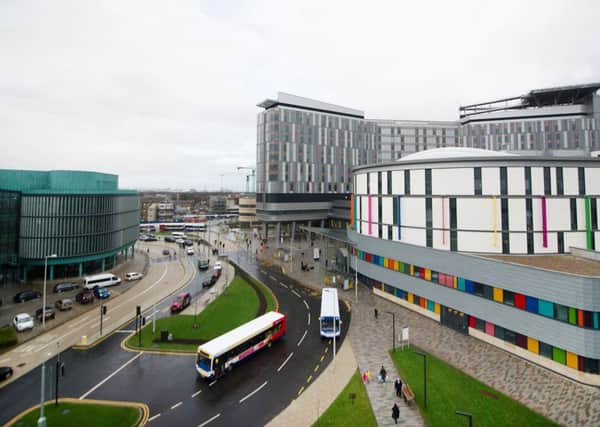New Glasgow hospital leads the way for precision medicine


Now the Queen Elizabeth University Hospital in Glasgow is positioning itself as a leading centre for precision medical research, a place where experts can work together to find new cures to common ailments.
This week the hospital will welcome another business to its Clinical Innovation Zone, an in-house research centre run by the University of Glasgow.
Advertisement
Hide AdAdvertisement
Hide AdClinical and translational informatics company Aridhia, who are already based in the city, will open an office in the building on Tuesday.
It will provide a base for its expanding team, focusing on data, analytics and innovation in biomedical research, as well as offering easy access to the established Stratified Medicine Scotland Innovation Centre (SMS-IC)
Researchers at SMS-IC work on ways to alleviate cancer, COPD, multiple sclerosis and rheumatoid arthritis, among other conditions.
Opened in April 2015 on the site of the former Southern General in Govan, the Queen Elizabeth will also soon to be the home of Scotland’s only precision medicine centre of excellence - an initiative from the UK Government’s precision medicine catapult programme, which aims to act as a hub for national and regional precision medicine activities within the UK-wide network.
Aridhia has worked closely with the SMS-IC, which uses AnalytiXagility as its informatics platform to collect, manage and analyse the vast volumes and diversity of data needed to realise the potential of stratified medicine.
The company believes its move will enable it work more closely with university researchers and SMS-IC, with a focus on the development of data-driven, operational clinical services that will benefit patients within Scotland and further afield.
“We are excited by the innovative work produced by the University and SMS-IC, and are pleased we are able to make our own valuable contribution in this field,” said Chris Roche, Aridhia CEO.
“It’s fulfilling to work alongside our peers in Scotland’s national hub for precision medicine, and collaborate so closely on life-changing projects.
Advertisement
Hide AdAdvertisement
Hide Ad“The work happening here in Glasgow, including projects focused on pancreatic cancer, COPD, multiple sclerosis and rheumatoid arthritis, will benefit millions of people around the world, finding better treatments for an array of medical conditions that are targeted to the individual’s needs, faster than ever before.
“We are delighted that our software platform service has made such a significant contribution to this work, and we look forward to continuing to assist these vital research projects, and others around the world, for many years to come.”
Aridhia already has close links with the University of Glasgow outside of precision medicine research.
Since 2013 the company has been part of the CHART-ADAPT project, an Innovate UK funded collaboration that aims to improve the outcome of patients with traumatic brain injuries using complex data analysis.
The opening of the office on Tuesday will also see the winners of Aridhia’s Impact in 60 Seconds competition revealed.
The award recognises the significance of engagement and communication between collaborations in the field of medical science.
The competition, organised in partnership with the University of Glasgow college of medical, veterinary and life sciences and Glasgow City of Science, encourages early-career researchers to prepare for their post-academia career by delivering a 60-second video highlighting their work in a way the public can understand.”